Northern Cyprus is a food lover’s paradise, blending Mediterranean and Middle Eastern flavors with a unique local twist. Here are five dishes you absolutely need to try:
- Şeftali Kebab: Lamb and beef mince wrapped in lamb caul fat, grilled to perfection for juicy, crispy kebabs.
- Halloumi: A grillable cheese made from goat’s and sheep’s milk, best served golden and paired with watermelon or honey.
- Molohiya: A green leaf stew with jute mallow, garlic, coriander, and a choice of lamb or chicken.
- Kleftiko: Slow-cooked lamb marinated with garlic, lemon, and oregano, wrapped and roasted for tender, flavorful meat.
- Pirohu: Stuffed pasta pockets filled with cheese, mint, or meat, served with yogurt sauce and grated halloumi.
Quick Overview:
| Dish | Key Ingredients | Cooking Style | Where to Try |
|---|---|---|---|
| Şeftali Kebab | Lamb, beef, lamb caul fat | Grilled | Sevener Restaurant, Kyrenia |
| Halloumi | Goat/sheep milk, mint | Grilled or raw | Nicosia Bazaar, Geçitkale Hellim Festival |
| Molohiya | Jute mallow, garlic, coriander | Stewed | Nicosia’s walled city |
| Kleftiko | Lamb, lemon, oregano | Slow-roasted | Yorgo Kasap, Kormakitis |
| Pirohu | Dough, cheese, mint | Boiled | Petek Pastahanesi, Famagusta |
These dishes capture the essence of Northern Cyprus’ culinary heritage, offering a delicious way to connect with the island’s culture.
Discover the Delicious Flavors of North Cyprus Cuisine
1. Şeftali Kebab: Wrapped Lamb Skewers
Don’t let the name fool you – Şeftali Kebab doesn’t contain any fruit. This beloved dish from Northern Cyprus highlights the region’s expertise in grilling meats, with a preparation method that makes it stand out among Mediterranean kebabs.
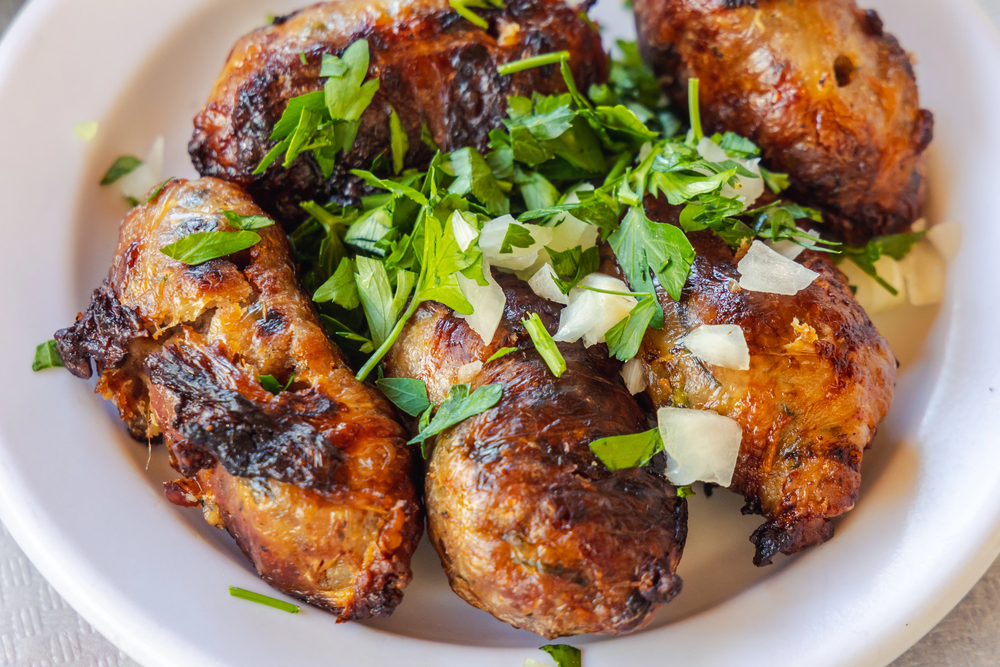
"These şeftali – Cypriot kebabs – take a little bit of time to assemble, but they’re more than worth the effort – the flavor you get from the combination of beef mince, lamb suet, onion and parsley is incredible, particularly when cooked over a barbecue." – Selin Kiazim
Traditional Ingredients
| Main Ingredients | Seasonings |
|---|---|
| Lamb mince | Salt |
| Beef mince (18%+ fat) | Kofte dry rub |
| Finely chopped onions | Optional: cinnamon |
| Fresh parsley | Optional: pul biber chili flakes |
| Lamb caul fat | Optional: black pepper |
For an authentic experience, try Şeftali Kebab at Sevener Restaurant in Alsancak, a well-known spot in Northern Cyprus for this dish.
Its unique preparation and seasoning make it different from other regional favorites like Greek biftekia or Cypriot keftedes, helping it gain popularity even in neighboring Greece.
2. Halloumi: Cyprus Grilled Cheese
Halloumi is a standout cheese from Northern Cyprus, known for holding its shape perfectly on the grill. With a history spanning 1,500 years, this cheese has become a favorite worldwide. Its firm texture and distinct flavor make it incredibly versatile in the kitchen.
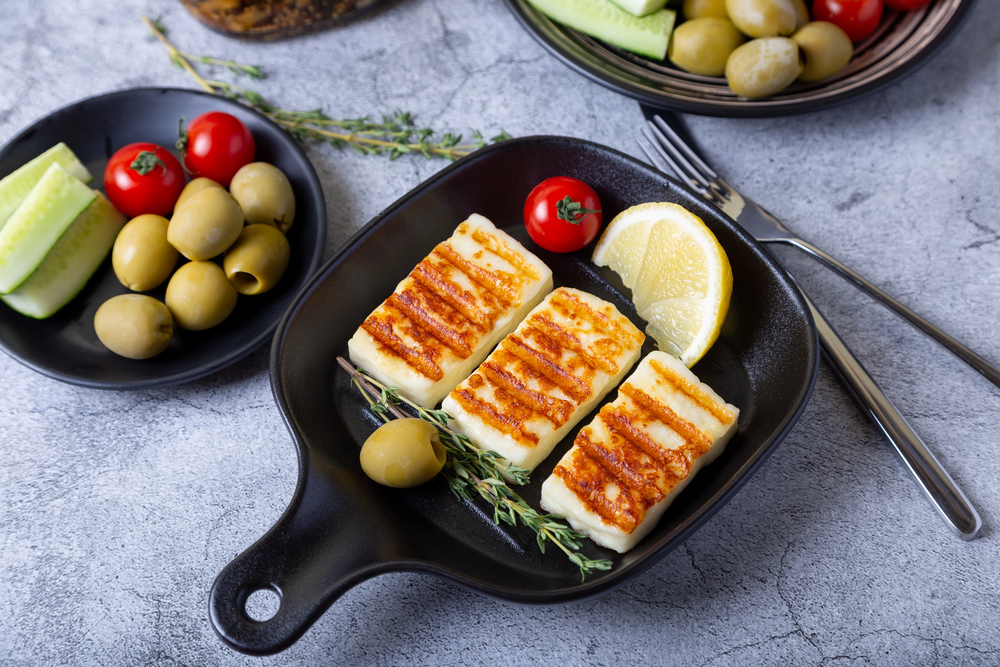
Common Serving Methods
| Preparation | Accompaniments |
|---|---|
| Grilled until golden | Lemon wedges |
| Pan-fried with a sesame crust | Honey glaze |
| Served in salads (raw or diced) | Cucumber and watermelon |
| Fresh mint garnish |
Where to Find the Best Halloumi
For the real deal, head to the Nicosia Bazaar, where local producers offer freshly made halloumi. Much like the grilled meats sold nearby, halloumi delivers the authentic flavors of the region. If you visit in August or September, you might catch the Geçitkale Hellim Festival, an event celebrating halloumi with creative dishes and a showcase of local traditions.
Halloumi also holds Protected Designation of Origin (PDO) status in the EU, meaning only cheese made in specific parts of Cyprus can be officially called halloumi.
sbb-itb-c04d957
3. Molohiya: Green Leaf Stew
Molohiya is a hearty stew made from jute mallow leaves, with roots tracing back to the Nile. In Cyprus, families traditionally harvest and dry the leaves during the summer months.
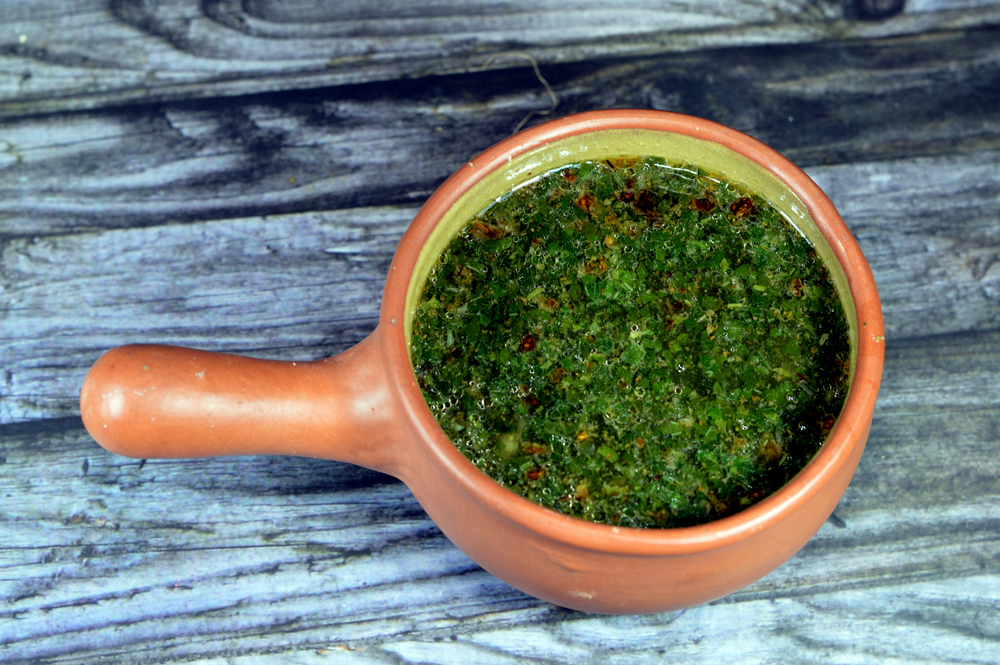
| Base Ingredients | Aromatics | Optional Proteins |
|---|---|---|
| Jute mallow leaves | Fresh garlic | Lamb |
| Rich broth | Onions | Chicken |
| Fresh tomatoes | Coriander | None (vegetarian) |
| Lemon | Tasha paste |
The dish gets its signature taste from tasha, a garlic and coriander paste fried in ghee. This step brings a deep, aromatic flavor to the stew.
Cooking Tips
Here are some tips to perfect your Molohiya:
- Wash the leaves well to reduce their natural sliminess.
- Keep the pot uncovered during cooking to maintain the vibrant green color.
- Use grated tomato to adjust the texture to your liking.
Where to Find It
Molohiya is primarily a home-cooked dish, but you can find authentic versions in a few traditional restaurants within Nicosia’s walled city. The best time to enjoy it is during the summer when fresh leaves are in season.
"Molokhia is an iconic Egyptian soup made of jute mallow leaves from which the dish gets its name. Those leaves are cooked in a rich chicken broth and flavored with tasha, a fragrant garlic-coriander paste fried in ghee, until velvety".
4. Kleftiko: Slow-Cooked Lamb
Kleftiko is a classic Cypriot dish that showcases the island’s love for slow-cooked, rustic meals. Its name comes from the Greek word "kleftis" (meaning thief), a nod to the rebels who cooked stolen lamb in sealed pits during Ottoman rule.
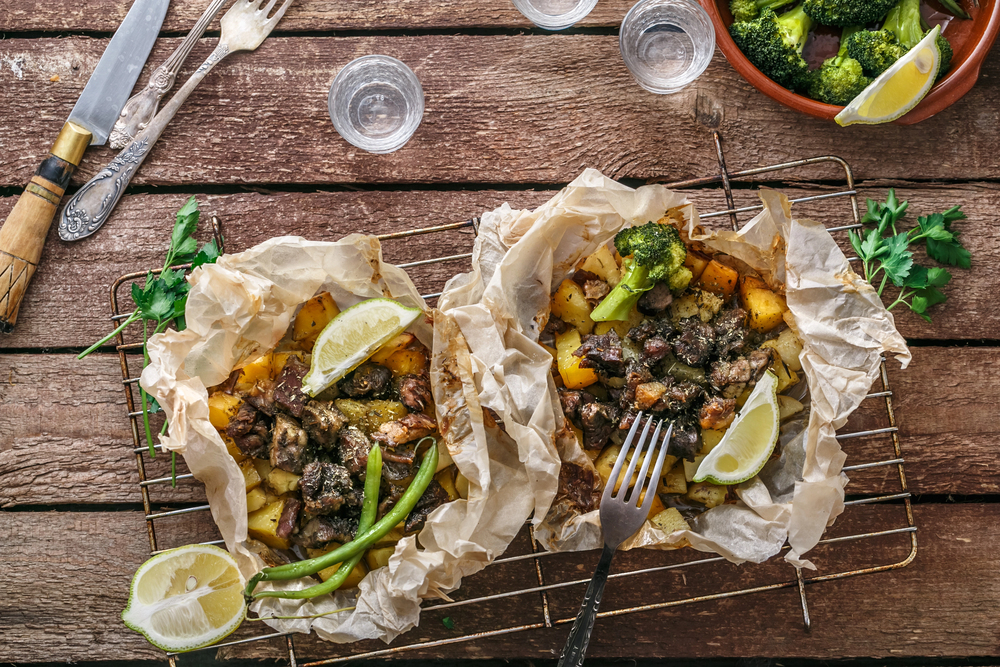
| Stage | Method | Key Ingredients |
|---|---|---|
| Marination | 12-24 hours | Garlic, lemon, oregano |
| Wrapping | Parchment or foil | Waxy potatoes, vegetables |
| Cooking | Slow roast | Greek herbs |
This process preserves the essence of tradition while using modern ovens instead of underground pits. The slow-cooking method remains at the heart of the recipe.
What Makes It Special
Wrapping the lamb in parchment creates a self-basting steam chamber, locking in all the natural juices and flavors. The result? Tender lamb and perfectly cooked vegetables that embody Mediterranean comfort food.
Where to Try It
Yorgo Kasap Restaurant in Kormakitis, Kyrenia has been serving its perfected Kleftiko recipe for nearly 50 years.
"Kleftiko isn’t just a dish – it’s a part of Cypriot heritage. It symbolizes resilience, resourcefulness, and a connection to the island’s history." – CyprusIsland.net
Chef’s Tips
- Let the meat rest for 15-20 minutes after cooking.
- Use waxy potatoes – they hold up better during long cooking.
- Ensure the parchment is sealed tightly to keep moisture in.
Yorgo Kasap Restaurant is a popular spot for Turkish Cypriots, Greek Cypriots, Maronites, and international visitors from Turkey, Russia, the UK, and France. Renting a car is recommended to reach Kormakitis, as public transportation options are limited.
5. Pirohu: Stuffed Pasta Pockets
Pirohu combines Mediterranean flavors with Eastern European dumpling traditions, creating a Cypriot take on stuffed pasta pockets.
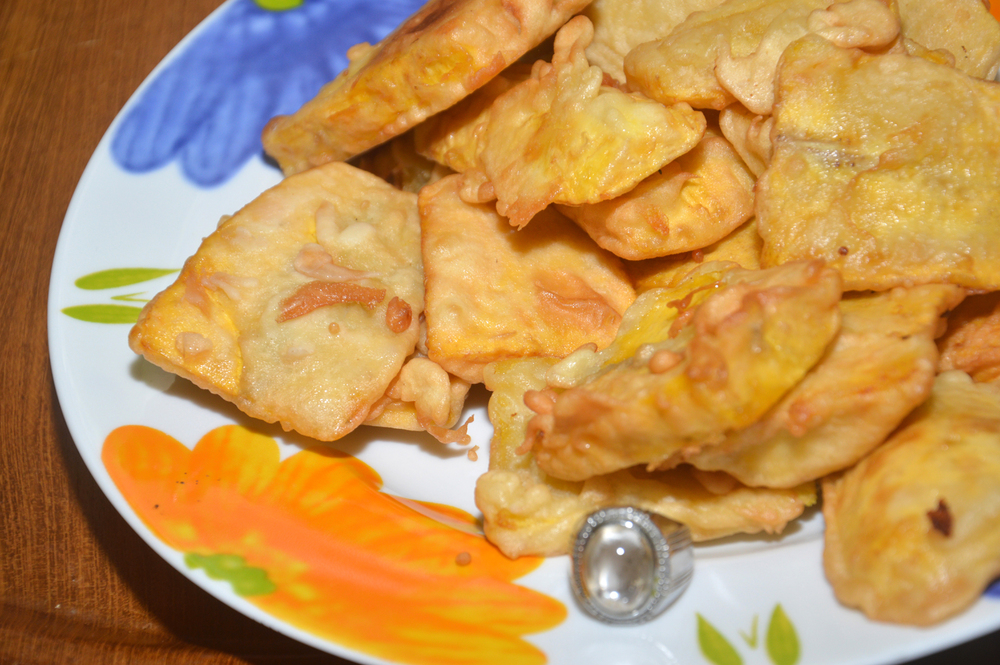
| Component | Description | Key Ingredients |
|---|---|---|
| Dough | Firm, filo-like texture | Flour, salt, water |
| Classic Filling | Fresh and aromatic | Anari cheese, mint, egg |
| Alternative Filling | Savory vegetarian option | Spinach, egg |
| Meat Version | Rich and hearty | Minced meat, onions, parsley |
What Makes It Unique
Unlike Turkish mantı, Pirohu is boiled and served with a flavorful yogurt sauce. The dish is elevated with crushed garlic, olive oil, red pepper flakes, and a generous topping of grated halloumi, creating a delicious and comforting meal.
Serving Tips
Pair Pirohu with plain yogurt mixed with crushed garlic. Add a drizzle of olive oil, a sprinkle of red pepper flakes, and a good amount of grated halloumi for an authentic touch.
Where to Try It
Finding authentic Pirohu can be a challenge for visitors. However, Petek Pastahanesi in Famagusta serves its version, labeled as "mint and cheese Ravioli pasta." For a more traditional experience, check out local eateries during Sunday lunch hours, when many serve their finest takes on this dish.
Chef’s Tip
The dough is key to perfect Pirohu. It needs to be firm enough to hold its shape but soft enough to complement the filling. Boil the pockets for 10-15 minutes to achieve the ideal texture – tender yet sturdy enough to hold all the flavors together.
Where to Find These Dishes
Looking for authentic Cypriot cuisine? The best way to experience it is by visiting the places where locals love to eat. Here’s how you can enjoy these culinary delights across Northern Cyprus.
Restaurant Recommendations
| Restaurant | Location | Specialty | Highlights |
|---|---|---|---|
| Sevener Restaurant | Kyrenia | Şeftali Kebab | Family-friendly, garden seating, pet-friendly |
| Yorgo Kasap | Kormakitis | Kleftiko | Nearly 50 years of family tradition, cooked the old-fashioned way |
| Anoyrkatiko Dairy Farm | Anogyra | Fresh Halloumi | On-site production with tastings available |
| Kouyiouka Watermill | South of Polis | Halloumi Bread | Vegetarian-friendly with a historical setting |
For more options, check out local markets and smaller hidden spots that often showcase these rich flavors.
Local Markets and Specialty Shops
Local markets are a great place to find fresh halloumi. Many bakeries sell halloumi pies for as little as $1.75 (€1.60), making it an affordable way to enjoy this iconic cheese. Specialty vendors also offer premium halloumi for those looking for something extra.
Dining Tips
Want the full experience? Keep these tips in mind:
-
When to Dine
- Traditional taverns (lokantas): 12:00 PM – 2:00 PM
- Sunday afternoons: Perfect for home-style dishes like Molohiya
- Evening meals: Best enjoyed after 7:00 PM
-
Where to Go for Specific Dishes
- Şeftali Kebab: Visit Kyrenia’s traditional restaurants
- Kleftiko: Head to Kormakitis for this slow-cooked lamb dish
- Molohiya: Check out family-run spots in Nicosia’s historic walled city
- Halloumi: Stop by Anoyrkatiko Dairy Farm west of Anogyra village (just follow the goat sign)
Hidden Gems
The Kouyiouka Watermill, located along the main B7 road south of Polis, is a great find. Its historic charm and focus on vegetarian dishes make it worth the visit.
Budget-Friendly Options
Traditional taverns often offer meze platters that include grilled halloumi, allowing you to try a variety of local dishes without breaking the bank. Look for places popular with locals – they usually provide excellent food at reasonable prices.

